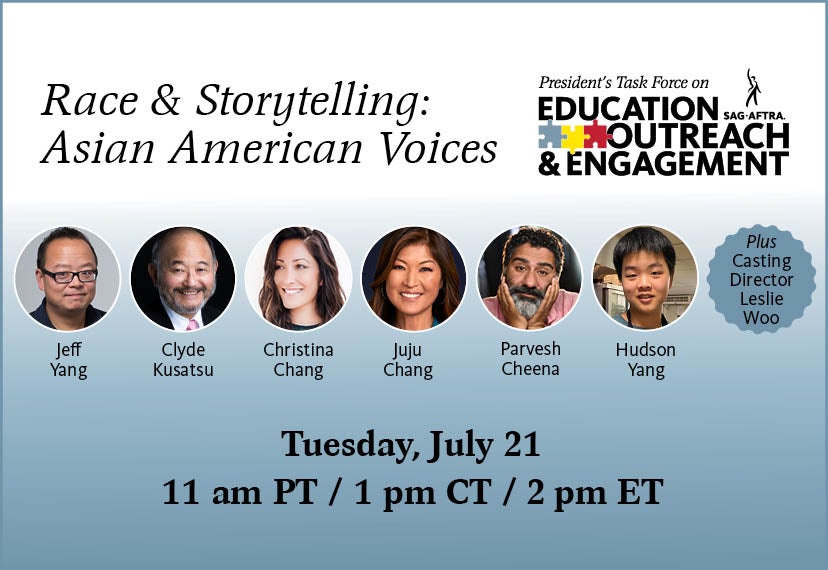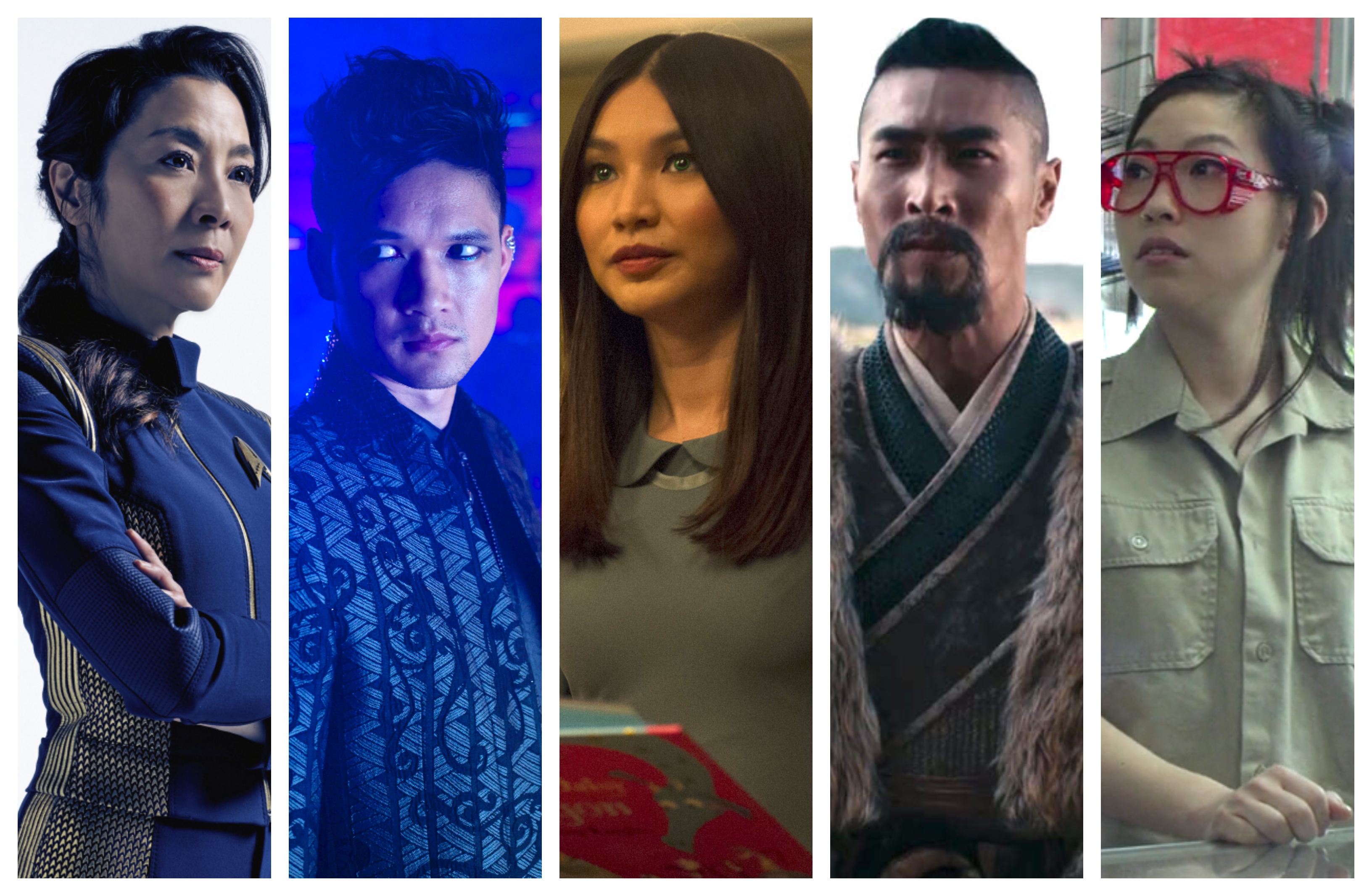Beyond Representation: Authentic Storytelling For Asian And Asian Americans In Media

Table of Contents
Avoiding harmful stereotypes and tropes
The persistent presence of harmful stereotypes undermines the progress towards genuine representation. These tropes not only misrepresent the diversity within Asian and Asian American communities but also actively contribute to negative real-world consequences.
The Bamboo Ceiling and Model Minority Myth
These insidious stereotypes limit the potential of Asian and Asian Americans both professionally and personally. The "Bamboo Ceiling" describes the invisible barriers that prevent Asian Americans from reaching leadership positions, despite their high levels of education and professional accomplishments. Meanwhile, the "Model Minority" myth, while seemingly positive, places undue pressure and ignores the struggles faced by many within the community.
- Examples of harmful stereotypes in film, TV, and other media: The perpetually submissive Asian woman, the nerdy, asexual Asian man, the villainous, inscrutable Asian mastermind.
- The impact of these stereotypes on audience perception and self-image: These tropes create harmful perceptions, reinforcing negative biases and limiting opportunities for real-world advancement. For Asian Americans, they can lead to feelings of inadequacy and pressure to conform to unrealistic expectations.
- The importance of challenging and dismantling these harmful tropes: We must actively work to deconstruct these stereotypes through nuanced character development and complex storylines that move beyond simplistic representations.
Hypersexualization and Fetishization
The hypersexualization and fetishization of Asian women and men in media are particularly damaging, reducing individuals to objects of desire and stripping them of their humanity.
- Examples of hypersexualized or fetishized portrayals: The exotic geisha, the submissive "dragon lady," or the hyper-masculine martial arts expert.
- The impact on real-world perceptions and experiences: This objectification fuels real-world harassment and discrimination, contributing to a climate of hostility and fear.
- The need for respectful and nuanced representations: We need stories that portray Asian women and men with respect, dignity, and agency, showcasing their full range of emotions and experiences.
Showcasing the diversity of Asian and Asian American experiences
The Asian and Asian American community is not a monolith; it encompasses a vast array of cultures, ethnicities, and experiences. Failing to acknowledge this diversity results in incomplete and inaccurate representations.
Beyond the Monolith
The vastness of the Asian and Asian American community demands a multifaceted approach to storytelling. From South Asian communities to East Asian, Southeast Asian, and Pacific Islander cultures, the experiences are tremendously diverse.
- Examples of different Asian and Asian American cultures and backgrounds: Indian, Chinese, Filipino, Korean, Vietnamese, Japanese, Thai, and many more. Each culture has its unique traditions, values, and challenges.
- The importance of showcasing this diversity through character development and storylines: We need narratives that reflect the unique experiences of each subgroup, avoiding broad generalizations and highlighting the individual nuances of each culture.
- The need to avoid generalizations and create nuanced, individualized characters: Each character should be uniquely developed, with their own goals, motivations, and conflicts, reflecting the complexity of real-life individuals.
Intersectionality and complex identities
Asian and Asian American identities are complex and multifaceted, shaped by intersecting factors like gender, class, sexuality, immigration status, and religious beliefs. Authentic storytelling must acknowledge these intersections.
- Examples of storylines that address intersectionality: Stories that explore the challenges faced by LGBTQ+ Asian Americans, working-class Asian immigrants, or disabled Asian women.
- The importance of representing the complexities of identity: Characters should not be defined solely by their ethnicity, but also by their other intersecting identities.
- Avoiding simplistic narratives that reduce individuals to single identities: We must move beyond reductive portrayals and embrace the full spectrum of human experience within the Asian and Asian American community.
Centering Asian and Asian American voices in the creative process
Authenticity requires centering the voices and perspectives of Asian and Asian Americans throughout the creative process, from conception to completion.
Behind-the-scenes representation
The lack of Asian and Asian American representation behind the camera is a significant barrier to authentic storytelling. Their involvement is crucial for creating narratives that accurately reflect lived experiences.
- The impact of authentic voices on the final product: Stories created by those with lived experience are more likely to be nuanced, accurate, and impactful.
- The importance of mentorship and opportunities for Asian and Asian American creatives: We need to actively foster opportunities for talented Asian and Asian American writers, directors, producers, and other creatives to thrive in the industry.
- The need for diverse hiring practices in the media industry: Industry leaders must prioritize inclusivity and actively seek out diverse voices in hiring and promotion practices.
Authentic cultural consultation
Working with cultural consultants from the relevant communities is essential for ensuring accuracy and sensitivity in portraying specific cultural practices and traditions.
- Examples of successful cultural consultations: Collaborating with community members to verify details, gain feedback on scripts, and ensure authenticity.
- The value of community feedback in the creative process: Engaging with the community throughout the development process ensures that the final product respects cultural sensitivities and avoids misrepresentation.
- The importance of respecting cultural sensitivities: Cultural consultation is not just about accuracy; it is about demonstrating respect and ensuring that portrayals do not perpetuate harmful stereotypes or misunderstandings.
Conclusion
Achieving authentic storytelling for Asian and Asian Americans requires a multi-pronged approach: avoiding harmful stereotypes, showcasing the full spectrum of diversity within the community, and centering Asian and Asian American voices throughout the creative process. This requires a conscious effort from media professionals, consumers, and industry leaders alike. We must demand and support authentic representation in media, ensuring that the stories told accurately reflect the rich experiences of Asian and Asian Americans. Let's move beyond superficial representation and embrace accurate portrayals of Asian Americans, promoting inclusive Asian and Asian American storytelling that fosters understanding and celebrates our vibrant culture. Let's work together to create a more equitable and representative media landscape.

Featured Posts
-
 Mueller Decisif Bayern Munich Domine L Inter En Quarts De C1
May 11, 2025
Mueller Decisif Bayern Munich Domine L Inter En Quarts De C1
May 11, 2025 -
 Rising Seas The Future Of Coastal Infrastructure
May 11, 2025
Rising Seas The Future Of Coastal Infrastructure
May 11, 2025 -
 Impact Of Jurickson Profars 80 Game Ped Suspension On His Team
May 11, 2025
Impact Of Jurickson Profars 80 Game Ped Suspension On His Team
May 11, 2025 -
 Crazy Rich Asians Tv Series Release Date And Cast News
May 11, 2025
Crazy Rich Asians Tv Series Release Date And Cast News
May 11, 2025 -
 Mtv Awards Hiatus No Movie And Tv Awards Show In 2025
May 11, 2025
Mtv Awards Hiatus No Movie And Tv Awards Show In 2025
May 11, 2025
